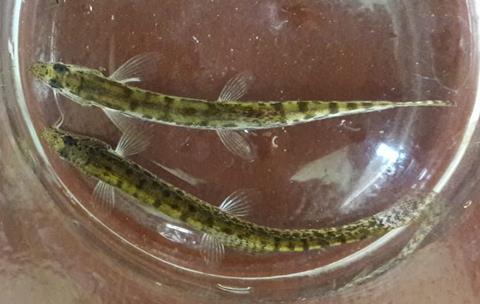A novel strain of Shigella isolated from the gut of a bottom-dwelling fish exposed to high loads of heavy metals and antibiotics has been found to have the first Type 2 secretion system fully documented in the bacterium.
The findings were reported in the paper ‘A novel strain of Shigella isolated from the gut of Lepidocephalichthys guntea has in its genome a complete gene package for Type ll secretion system and an elaborate repertoire of genes responsible for multiple antibiotic resistance and metal resistance via specific efflux channels’ which has been accepted for the journal Letters in Applied Microbiology, an Applied Microbiology International publication.

Corresponding author Professor Ranadhir Chakraborty, from the T2SS, said the team chose to study the gut microbiome of Lepidocephalichthys guntea, a bottom-dwelling fish that lives in stagnant, dirty water and is omnivorous as well as scavenger, detritus feeder, and a micropredator by feeding habitat, because it is frequently exposed to levels of heavy metals and metalloids that exceed permissible limits, antibiotic residues, and a number of xenobiotic compounds.
Intestinal breathing
Due to its ability to switch to breathing through the intestine, the fish can survive in muddy, warm river water with little dissolved oxygen or in a dried-up water body.
“The uncoiled intestine of this fish is used for air breathing, and the anterior and middle intestines are used for the digestion and assimilation of food particles,” Professor Chakraborty said.
“The posterior intestine, however, has a very different anatomical pattern, with a smaller absorptive area than the rest of the gut and blood capillaries perforated between columnar epithelial cells.
“These characteristics drew us to investigate the major microorganisms that colonised its gastrointestinal tract while keeping in mind that the natural environment is the principal determining factor.”
Resistance genes
Professor Chakraborty said the majority of the microorganisms that are transferred from the environment to the fish intestine come from either the water- or food-borne bacteria that are carried by prey and as a result, the gut microbiome will not only reflect the microbes in its environment but will also characterise the precise selection of relevant genes, offering a perfect route for the acquisition and spread of resistance genes.
“After a decade of research, we discovered that genes for antibiotic resistance and toxic metal/metalloid resistance are increasingly being found in freshwater environments,” he said.
“We chose to research the core-intestinal bacteria in L. guntea because fish are both direct witnesses to and victims of the pollution that the host’s extraordinarily mobile resistant microbiome causes.
“In particular, the greater percentage of Shigella in the fish intestines suggested that the fish had either chosen Shigella specifically from the habitat water or that a novel Shigella strain had evolved that outperformed the other environmental bacterial taxa in the intestinal environment.”
T2SS discovery
The first fully documented Type II secretion system (T2SS) from a Shigella spp. species is reported in the paper.
As Professor Chakraborty explains, the extracellular secretion of folded proteins, toxins, and enzymes like pseudolysin and pullulanase, which are essential components of bacterial pathogenicity and provide a favourable environment for bacterial growth, are dependent on the T2SS.
Put another way, the secretion of various lipoproteins, hydrolyzing enzymes, and virulence factors, including toxins that are involved in pathogenesis, as well as enabling bacterial survival and growth in a particular environmental niche and outwitting rivals, are all carried out by the T2SS system.
“The T2SS was likely copied and pasted into this newly discovered Shigella strain over the process of development from an Escherichia strain,” Professor Chakraborty says.
“The ability of this strain to colonise the intestine of L. guntea has been aided by a number of antibiotic resistance genes, heavy metal and metalloid resistance genes (ARGs), high pathogenicity islands, multiple insertion elements, transposons, and type I-E CRISPR-Cas systems.”
To read the paper, click HERE.
Topics
- Antimicrobial Resistance
- Applied Microbiology International
- Aquatic Microbiology
- Asia & Oceania
- Bacteria
- Community
- Escherichia
- fish
- Gut Microbiome
- Healthy Land
- Lepidocephalichthys guntea
- Letters in Applied MIcrobiology
- metal resistance
- Microbial Genomics
- One Health
- pollution
- Ranadhir Chakraborty
- Research News
- Shigella
- Type II secretion system
- University of North Bengal







No comments yet